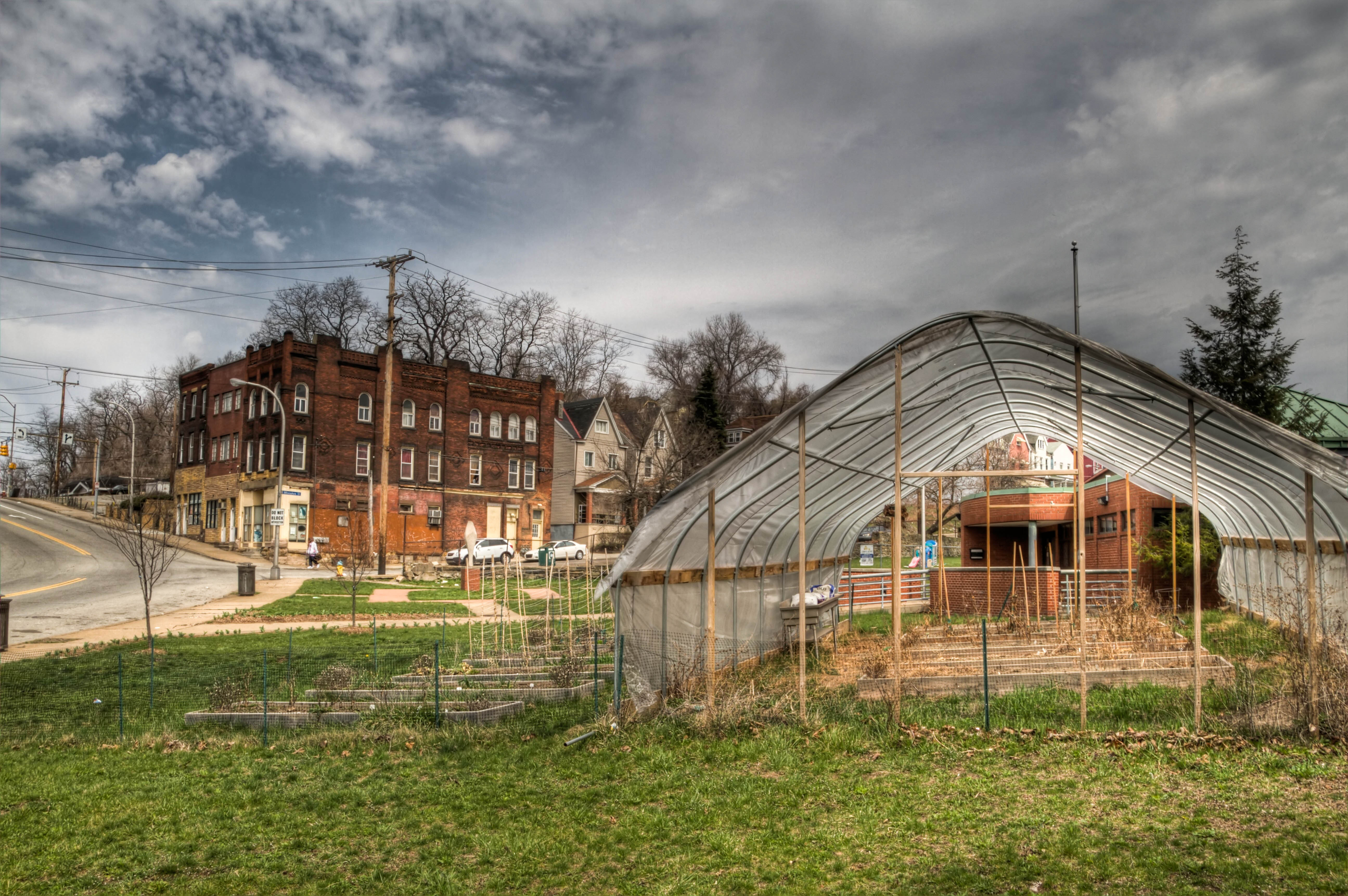Pittsburgh’s Hill District hasn’t had a full-service grocery store in 30 years.
Nestled in the heart of the city, the Hill was once a vital center of jazz, black culture, and civic life, earning it the nickname “Little Harlem.” The neighborhood had its own newspaper and radio station. Thoroughfares were lined with black-owned clubs, restaurants, and shops. Dizzy Gillespie sat in at the Crawford. Satchel Paige played at Greenlee Field. Harlem Renaissance poet Claude McKay called it “the crossroads of the world.”
All that changed in the 1950s, when urban “renewal” projects displaced thousands of residents and hundreds of businesses. Homes were razed to the ground and never rebuilt. Jazz clubs became parking lots. The wrecking balls left, but the Hill never recovered.
Today, median household income in the Hill District is less than $13,800. Just 37 percent of residents are employed, and nearly half receive benefits from the federal Supplemental Nutrition Assistance Program. Close to one in four reports having “low” or “very low” food security. And, until a few years ago, it had no real grocery store.
When, in 2010, epidemiologists at the RAND Corporation learned that a new full-service grocery was slated for construction in the Hill District, they saw an opportunity to conduct a “natural experiment.” What happens to a community’s physical and economic health when it goes from food desert to food oasis? By comparing the Hill to Homewood, a different Pittsburgh neighborhood that’s remained a food desert, the researchers hoped to measure the real-world return on investment of opening a grocery.
“It’s an issue of social equity,” says Andrea Richardson, the study’s lead author. “We’re interested in the role of the environment—how it affects people’s health behaviors and health disparities.”
In an initial study, published in 2015, Richardson’s colleagues at RAND showed that, when compared to their neighbors in Homewood, Hill District residents ate higher-quality food, and consumed fewer calories and added sugars, after a full-service grocery store opened on the Hill.
Oddly, though, it wasn’t because they were actually shopping at the new store. In interviews, Hill District residents consistently told researchers that, while the new grocer made them feel better about their neighborhood, most were so accustomed to shopping elsewhere that, even though they now had a closer option, they hadn’t changed their routines.
The researchers could point to a measurable effect—Hill District residents were eating better—but not an obvious cause. A piece of the puzzle was still missing.
In a second study, published this month in the Annals of Epidemiology, Richardson and her collaborators set out to do some sleuthing. “We asked, ‘Are there other things that could explain residents making healthier choices after a new grocery store opens—economic reasons that help residents improve their health and diet?'” Richardson explains.
The researchers found that, in the year after a grocery store opened in the Hill District, residents reported pronounced declines in both SNAP participation and food insecurity—a 12 percent difference in both—compared to their neighbors in Homewood, where no grocery store opened. (Hill residents also reported fewer new diagnoses of high cholesterol and arthritis.)
Such a dramatic decrease in SNAP participation and food insecurity suggested to researchers that the new grocery is likely having an indirect economic benefit on Hill residents. Even if they continue to shop elsewhere, the store’s mere existence provides them a financial bump. The authors suggest a couple ways this might work: A grocery store provides jobs, boosts home prices and real estate values, and serves as an economic “anchor” that attracts other new businesses.

(Photo: Ronald Woan/Flickr)
Economics aside, a new grocery store might also improve public health in psychological ways as much as physiological ones. A supermarket in an under-resourced neighborhood provides a “third space” place for residents to meet and socialize, creating social cohesion. (You don’t really go to Starbucks for the coffee—you go to see your friends, flirt with the barista, steal the Wi-Fi, and use the bathroom.) If they get a little shopping done while they’re there, so much the better.
“Hill District residents’ perceptions of their neighborhood improved,” Richardson says. “Your sense of how much you like where you live may cause more hopefulness and less stress,” both of which impact physical health. She continues, “Neighborhood investment may have broader impacts on residents’ health in underserved areas.”
In the end, neighborhoods are ecosystems, as fragile as they are complex. As one longtime Hill District resident told Pittsburgh Magazine: “Wylie Avenue was about three miles long from Herron all the way to the courthouse—three miles of retail stores, door to door. A dollar changed hands 12 times before it left the Hill District.”
The relationships—economic and social—that once made the Hill a mecca of black American life took generations to build and just years to destroy. Rebuilding them will take more than a few grocery stores. If, that is, it can be done at all.



